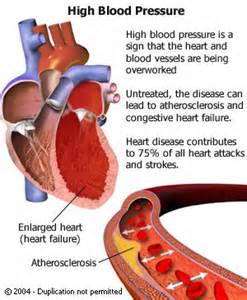Written by D. Katrice Mackey, Physician's Assistant-C; Central, GA District: April 21, 2015
Blood pressure is the force of blood pushing against blood vessel walls. High Blood Pressure (HBP) means the pressure in your arteries is higher than it should be. Another name for high blood pressure is hypertension.

Blood pressure is written as two numbers, such as 112/78 mm Hg. The top number is known as the systolic. This is the measurement of pressure when the heart beats or contracts. The diastolic or the bottom number is the measurement of pressure when the heart is relaxed or rests between the beats. Normal blood pressure is below 120/80 mm Hg.
If you’re an adult and your systolic pressure is 120 to 139, or your diastolic pressure is 80 to 89 (or both), you have “pre-hypertension.” High blood pressure is a pressure of 140/90 or higher that stays high over time. You cannot diagnose high blood pressure from one high reading.

No one knows exactly what causes most cases of high blood pressure. It can’t be cured, but it can be managed. High blood pressure usually has no signs or symptoms. That’s why it is so dangerous and known as the SILENT KILLER.
Not treating high blood pressure is dangerous. High blood pressure increases the risk of heart attack and stroke. And if not treated over time it will cause kidney damage, which can result in being placed on dialysis. You can live a healthier life if you treat and manage it! Make sure you get your blood pressure checked regularly and treat it the way your doctor advises. Let’s take control of our blood pressure!

WHO IS AT HIGHER RISK?
- People with close relatives who have HBP
- African Americans
- People over age 35
- Overweight people
- People who aren’t physically active
- People who consume too much salt
- People who drink too much alcohol
- People with diabetes, gout or kidney disease
- Pregnant women
- Women who take birth control pills, who are overweight, had HBP during pregnancy, have a family history of HBP or have mild kidney disease
Reference: American Heart Association
Submitted By: D.Katrice Mackey,PA-C


